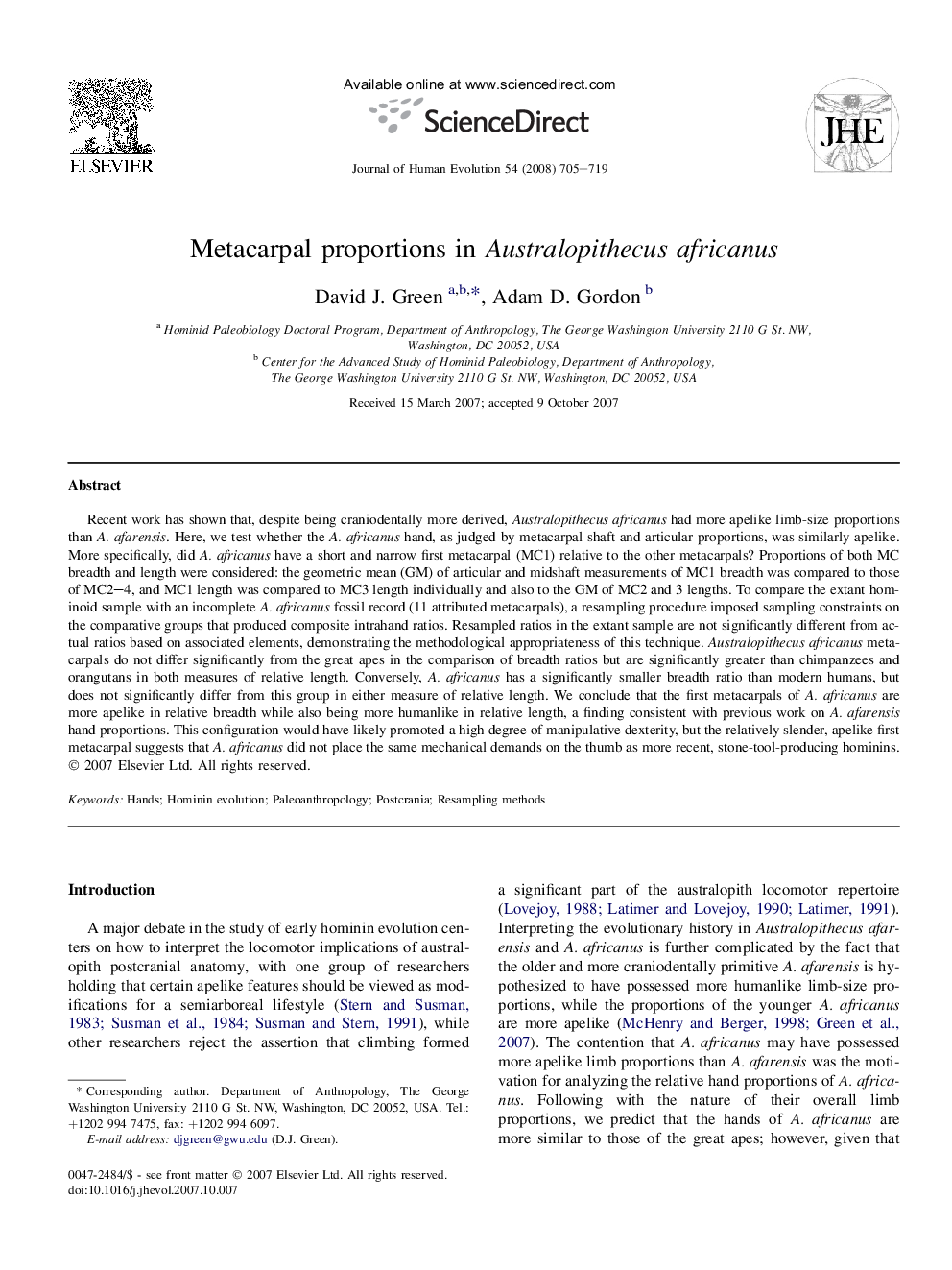| کد مقاله | کد نشریه | سال انتشار | مقاله انگلیسی | نسخه تمام متن |
|---|---|---|---|---|
| 4557183 | 1329532 | 2008 | 15 صفحه PDF | دانلود رایگان |

Recent work has shown that, despite being craniodentally more derived, Australopithecus africanus had more apelike limb-size proportions than A. afarensis. Here, we test whether the A. africanus hand, as judged by metacarpal shaft and articular proportions, was similarly apelike. More specifically, did A. africanus have a short and narrow first metacarpal (MC1) relative to the other metacarpals? Proportions of both MC breadth and length were considered: the geometric mean (GM) of articular and midshaft measurements of MC1 breadth was compared to those of MC2–4, and MC1 length was compared to MC3 length individually and also to the GM of MC2 and 3 lengths. To compare the extant hominoid sample with an incomplete A. africanus fossil record (11 attributed metacarpals), a resampling procedure imposed sampling constraints on the comparative groups that produced composite intrahand ratios. Resampled ratios in the extant sample are not significantly different from actual ratios based on associated elements, demonstrating the methodological appropriateness of this technique. Australopithecus africanus metacarpals do not differ significantly from the great apes in the comparison of breadth ratios but are significantly greater than chimpanzees and orangutans in both measures of relative length. Conversely, A. africanus has a significantly smaller breadth ratio than modern humans, but does not significantly differ from this group in either measure of relative length. We conclude that the first metacarpals of A. africanus are more apelike in relative breadth while also being more humanlike in relative length, a finding consistent with previous work on A. afarensis hand proportions. This configuration would have likely promoted a high degree of manipulative dexterity, but the relatively slender, apelike first metacarpal suggests that A. africanus did not place the same mechanical demands on the thumb as more recent, stone-tool-producing hominins.
Journal: Journal of Human Evolution - Volume 54, Issue 5, May 2008, Pages 705–719